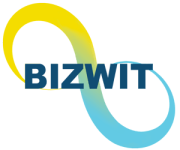Global Marine Scrubber Market is valued at approximately USD 4.9 billion in 2021 and is anticipated to grow with a healthy growth rate of more than 16.2% over the forecast period 2022-2029. A marine scrubber, also known as a marine exhaust gas cleaning system, is a technology used to reduce air pollution emissions from marine vessels, such as ships and tankers. The system works by cleaning the exhaust gases emitted by the ship’s engines, which typically contain pollutants such as sulfur oxides (SOx), nitrogen oxides (NOx), and particulate matter (PM). The scrubber system uses a combination of water and chemicals, such as caustic soda, to neutralize these pollutants before they are released into the atmosphere. Marine scrubbers can be installed as either an open-loop system or a closed-loop system. Open-loop scrubbers use seawater to neutralize pollutants, while closed-loop scrubbers use fresh water and store the resulting wastewater for later treatment or disposal. The use of marine scrubbers is a cost-effective way for shipping companies to comply with regulations on emissions, such as the International Maritime Organization’s (IMO) sulfur cap. This regulation, which came into effect in January 2020, limits the amount of sulfur in fuel oil used on board ships to 0.5% or less, down from the previous limit of 3.5%. The key factors driving the market growth are air pollution prevention policies and laws imposed by the government to protect the environment, implementation of sulphur 2020 rule, growing international marine freight transport, and rising demand for cargo transportation through ships are anticipated to create the lucrative demand for the market during the forecast period.
The rising maritime freight transportation is anticipated to create demand for the market. With the increase in international trade and marine freight transport, there has been a corresponding rise in the number of ships operating globally. This has led to an increase in demand for marine scrubbers as shipping companies seek to reduce their emissions and comply with regulations. As per the Ministry of Land, Infrastructure, Transport and Tourism (Japan)., coastwise shipping moved about 324.66 million tons of goods in the fiscal year 2021, up 6.1 per cent from the prior year. Most of the domestic maritime freight was transported by private vessels, totalling about 323.76 million tons. Also, according to The Indian Brand Equity Foundation, sea ports handle almost 95% of India’s international trade in goods. Along with these, according to India’s Ministry of Port, the cargo traffic at the country’s main ports in 2020 was estimated to reach 414.20 million metrics tons. In 2021, this traffic climbed 12.9% over the first quarter of the previous year. As a result, the rising international maritime trade is anticipated to support market growth. Additionally, rising demand for sustainable methods to control sulfur emissions from ships and growing e-commerce and online trade is anticipated to create a lucrative opportunity for the market during the forecast period. However, the high installation and maintenance cost of Marine Scrubber stifles market growth throughout the forecast period of 2022-2029.
The key regions considered for the Global Marine Scrubber Market study includes Asia Pacific, North America, Europe, Latin America, and Rest of the World. North America is the dominating region across the world in terms of market share, owing to the presence of key market players, cohesive government rules and regulations as well as rising international trade in the region. Whereas, Asia Pacific is also anticipated to exhibit the highest growth rate over the forecast period, owing to factors such as growing international maritime trade and transportation and growing online and e-commerce trade business activities that would create lucrative growth prospects for the Marine Scrubber market across the Asia Pacific region.
Major market player included in this report are:
Kwangsung Co., Ltd. (Mexico)
Alfa Laval (Sweden)
Hamon Research-Cottrell, Inc. (Belgium)
CR Ocean Engineering (US)
Damen Shipyards Group N.V. (Netherlands)
VDL AEC Maritime B.V. (Netherlands)
Langh Tech Oy Ab (Finland)
Ecospray Technologies S.r.l. (Italy)
DuPont (US)
Yara International ASA (Norway)
Recent Developments in the Market:
Ø In May 2020, Valmet and Mitsubishi Shipbuilding Co., Ltd. entered into a contract for the delivery of hybrid scrubber systems to Shimonoseki Shipyard. Two Valmet marine scrubber towers and a Valmet marine automation system are installed on each vessel.
Global Marine Scrubber Market Report Scope:
Historical Data 2019-2020-2021
Base Year for Estimation 2021
Forecast period 2022-2029
Report Coverage Revenue forecast, Company Ranking, Competitive Landscape, Growth factors, and Trends
Segments Covered Technology, Application, Installation, Region
Regional Scope North America; Europe; Asia Pacific; Latin America; Rest of the World
Customization Scope Free report customization (equivalent up to 8 analyst’s working hours) with purchase. Addition or alteration to country, regional & segment scope*
The objective of the study is to define market sizes of different segments & countries in recent years and to forecast the values to the coming years. The report is designed to incorporate both qualitative and quantitative aspects of the industry within countries involved in the study.
The report also caters detailed information about the crucial aspects such as driving factors & challenges which will define the future growth of the market. Additionally, it also incorporates potential opportunities in micro markets for stakeholders to invest along with the detailed analysis of competitive landscape and product offerings of key players. The detailed segments and sub-segment of the market are explained below:
By Technology:
Wet Technology
Dry Technology
By Application:
Bulk Carriers
Container Ships
Oil Tankers
Chemical Tankers
Cruises
Others
By Installation:
New build
Retrofit
By Region:
North America
U.S.
Canada
Europe
UK
Germany
France
Spain
Italy
ROE
Asia Pacific
China
India
Japan
Australia
South Korea
RoAPAC
Latin America
Brazil
Mexico
RoLA
Rest of the World



